Brian Murphy's Blog, page 37
April 17, 2021
Gateways to sword-and-sorcery
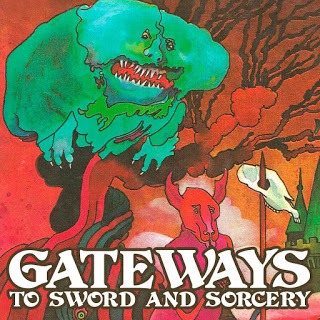 Monster Tales! What are yours?
Monster Tales! What are yours?I have many fond memories of youthful reading. When I was in elementary school I was enthralled with the likes of Fire-Hunter by Jim Kjelgaard, Sir Walter Scott's Ivanhoe (abbreviated/illustrated version), and was engrossed/entertained/scared shitless by Monster Tales: Vampires, Werewolves & Things. I'm still looking for a reasonable copy.
With the benefit of hindsight I realize that these books were leading me, inevitably, toward sword-and-sorcery. Barbaric/pre-historic heroes. Warfare. Monsters and the weird. Throw into a bubbling cauldron and you get S&S. Soon I would find The Savage Sword of Conan, and my path was fixed. But I was already leaning heavily in that direction.
My gateways to sword-and-sorcery are here at Tales from the Magician's Skull.
April 16, 2021
Flame and Crimson in Xuthal: Innsmouth Book Club Podcast is up
As mentioned on my last post, I was recently invited to guest on the Innsmouth Book Club podcast. That recording is now up; you can listen here (note: the podcast is hosted on Patreon but you don't have to be a patron to listen).
I have to say I was probably at my relaxed best; I had a lot of fun with this show. I spent a fair bit of my time on my childhood memories of what got me into S&S. I also relayed a story of the time I visited the abandoned Danvers State Hospital, one of the eeriest experiences of my life. I do after all live in Lovecraft country, a long stone's throw from the historical Innsmouth, Newburyport MA.
The two hosts were great and a lot of fun, and were well-read and asked some good questions that allowed me to ramble. It's amazing that you can just hop on a Zoom call and shoot the shit for an hour with two like-minded dudes from Britain. What a world.
The first 30 minutes or so are the two guests talking about Xuthal of the Dusk, with me joining later.
April 10, 2021
Some swordly-and-sorcerous goings-on, and guest appearances
If you want to get invited on a podcast, the thing to do is to write a book (it's that easy! Well, not the writing of the book part, which is rather hard). Then apparently you have become an authority, or a quasi-celebrity, instead of an average boring dad who likes to read about men stabbing monsters, and each other, during his spare time.
Tomorrow I will be serving as guest on the UK-based Innsmouth Book Club, a podcast which covers HPL, CAS, REH, and other like authors. The hosts will be covering "The Slithering Shadow"/"Xuthal of the Dusk," then I'll be on to talk S&S more broadly. Little do these guests know I live within a stone's throw of the historical Innsmouth, Newburyport MA. And have seen Deep Ones (or maybe they were just drunk bar patrons ... who knows).
Next month I've been asked to guest on a new show called Unknown Worlds of the Merril Collection, with the episode to appear sometime this summer.
I've also been told that a podcast episode I did with Robert Zoltan on the Literary Wonder & Adventure Show last June is nearing 2K views. Check that out here.
Among the reasons I love to write is that it allows me to express my true and actual voice, which due to a combination of natural introversion (I definitely recharge in solitude, away from people) and mild social anxiety is far easier for me to do in the written word than in conversation. That's why I've resisted starting a podcast myself. I fear I'm not very glib, or interesting. Just interested in certain things, like S&S and heavy metal, if that makes sense.
I hope I can deliver something of value to these programs. Even against my natural inclinations I'm leaning into the apprehension and doing my part to spread the gospel of sword-and-sorcery.
On the writing side of things, I recently had published an academic essay, "From Pulps to Paperbacks: The role of medium in the development of sword-and-sorcery fiction," in The Journal of American Culture. The publisher is the Wiley Online Library and it's behind a paywall, but if you're interested and/or have library or other free access, you can find it here. One of my discoveries during the research and writing of Flame and Crimson was that sword-and-sorcery was shaped as much by medium as by the idiosyncratic contributions of individual authors. That's what this essay is about, covering the role of pulps, magazines and fanzines (in particular Amra), and mass-market paperbacks, on how sword-and-sorcery came to be. It was done on a very tight deadline after Jason Ray Carney, editor of The Dark Man, asked me to fill in for someone else who had to bail last minute, and so it relies on much material from Flame and Crimson. But the focus is more squarely on the medium, not the authors. I do hope it opens up S&S to some academic-types and other cultural observers.
April 9, 2021
Man of Sorrows, Bruce Dickinson
If you're an Iron Maiden fan but have not given Bruce Dickinson's solo albums a listen, you're behaving in a criminally irresponsible manner. Please fix that.
Exhibit A; this is not even accorded one of Dickinson's better solo songs, but it's one that showcases that one of a kind voice that is the Air Raid Siren. "Man of Sorrows" (from Accident of Birth, 1997) is far more soulful and personal than we'd see on the likes of Piece of Mind, but Bruce belts it out with verses that soar.
Enjoy. Happy (metal) Friday.
April 2, 2021
Queen of the Black Coast, Manilla Road (and REH, too)
Did Robert E. Howard influence heavy metal artists?
Does a bear shit in the woods?
Among the many things I love about sword-and-sorcery are that its tentacles are everywhere, including some places you might not expect. Like the lyrics of a heavy metal band formed in 1977 in Wichita, Kansas.
Take a listen to "Queen of the Black Coast," off of 1982's Metal (aside: can an album name get more metal than Metal? Like Spinal Tap, it gets none more black than that). Many metal bands including early Black Sabbath appropriated fantasy and demonic imagery, while other bands incorporated sword-and-sorcery whole cloth into their music:
These dudes aren't everyone's cup of tea and probably never made to the metal mainstream (though they were close with 1983's Crystal Logic) due to Mark Shelton's odd singing voice, and esoteric subject matter. Shelton can be jarring at first, but he grows on you, and Manilla Road has hooked me deep. The REH content is icing on the cake.
I love this tune, and this story, and the fusion of old stories influencing subsequent artists in different mediums. And even though Manilla Road is gone with the death of Shelton, the bard's songs continue.
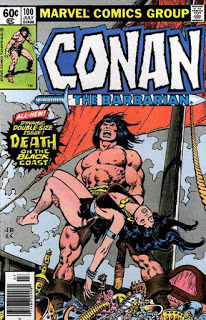 Spoiler alert.
Spoiler alert.
March 30, 2021
Confess, Rob Halford (2020), a review
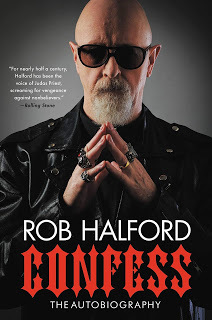 The Metal God tells all...I’m a raging Judas Priest fan, and chances are if you like metal you are too. I frequently vacillate between Priest and Maiden as the greatest metal band ever. When I hear the notes of The Hellion/Electric Eye I’m tempted to just say, fuck it, Judas Priest.
The Metal God tells all...I’m a raging Judas Priest fan, and chances are if you like metal you are too. I frequently vacillate between Priest and Maiden as the greatest metal band ever. When I hear the notes of The Hellion/Electric Eye I’m tempted to just say, fuck it, Judas Priest. So I was pleased to be able to buy and finally read lead singer Rob Halford’s “tell all” Confess. This highly anticipated biography came out in September 2020 and a couple of my friends were like “you’re just reading that now?” But hey, what can I say, my TBR pile is towering and ridiculous.
Straight off, if you’re a gay-hater, you’ll hate this book (and you may also wish to engage in some self-introspection, there is no choice in the matter for a man like Rob Halford, who simply knew he was gay from a very young age). In places Rob went a bit overboard on his descriptions of his various and often sordid sexual encounters. I couldn’t believe the lead singer of such a hugely popular band had to resort to trolling in truck stops, for example. So if you’re squeamish about these things or a prude you should probably skip the book. But, these passages serve to underscore the double life Halford was forced to lead, and the separate identities—bad ass metal god, sensitive closeted gay man—he had to maintain and (attempt) to balance.
Not always well as it turned out.
Rob Halford is immensely talented, but also very human and this artificial duality likely led to his substance abuse problems. Confess gives the full treatment of Rob’s spiraling alcoholism and cocaine use that led to an attempted suicide via O.D., check-in to full-on rehab, and 35 years and counting of sobriety.
But this book is far from dark, or depressing. Or even typical rags to riches story. It’s extremely British—Halford is from Walsall, north of the industrial steel producing city of Birmingham, whose blue collar work ethic was part of what made him so driven and successful, and whose ceaseless sound of the ironworks and ash-choked air led to the development of heavy metal’s sound and feel. I was introduced to an entire new British vocabulary that at times veers into A Clockwork Orange territory. Pass the thesaurus. We get Spinal Tap moments, including falls off his trademark Harley Davidson while driving the machine on stage, early career drummer turnover (Spinal Tap HAD to have used Priest as inspiration for their spontaneous combustion/bizarre gardening incident jokes), broken down tour busses, fist-fights, debauched recording sessions in Nassau. At the tail end of his solo career Halford veered into some truly weird synth-driven industrial crap music, complete with ridiculous eye shadow and fu Manchu look that resulted in him playing in front of a few dozen spectators in bars. While Rob has dedicated his life to heavy metal—he trademarked his moniker “Metal God,” and his band was THE first to embrace the heavy metal label, and give it its signature look and sound—he doesn’t take it all so seriously. In 2014 he brought the talented but fully tongue in cheek Steel Panther on tour with Priest, a band that both loves and mocks all of metal’s excesses.
Confess has the details fans are looking for. We get a pretty good recount of the ridiculous (in hindsight) 1990 lawsuit by the families of two young fans who entered into a suicide pact (one was successful and blew his head off with a shotgun, one was left disfigured after pulling the trigger and later was successful in killing himself with pills), and whose parents sued Judas Priest for inciting the incident. Their case centered on blaming Priest’s song lyrics as well as “subliminal messages” that could supposedly be heard by playing some of their songs backwards, and encouraged their sons to “Do It.” While it’s hard to believe this suit actually made it to trial, it set an important precedent for free speech and free expression. Judas Priest was thankfully exonerated, and went on to perhaps their most successful tour in support of the immortal Painkiller album.
And we get many jaw-dropping big-band moments, like Rob being asked to step in for Ozzy Osbourne for a Black Sabbath show in 1992 when the latter fell ill, at a moment’s notice, and winning over the crowd. Singing in front of a quarter of a million fans at the U.S. Festival in California in May 1983. Coming out as a gay man on MTV in 1998, which was completely unscripted and left the interviewer in shock. Lady Gaga, a noted heavy metal fan, stopping during a concert and bowing to Rob. Meeting the likes of Queen Elizabeth and the lead singer of Queen, Freddie Mercury. Opening up for Led Zeppelin as a relatively unknown supporting act in 1977, in front of 80,000 fans, and later sharing a helicopter ride with Jimmy page. On and on—what a life, what a career.
Still, I wanted more. As I felt after reading other biographies of individuals whom I admire and respect (“What Does This Button Do” by Bruce Dickinson, for example), I was left wishing there was more said about the art, not just the artist. I wanted more perspective from Rob on songwriting, and how the music was composed. I wanted more on his ability as a singer, as I believe he may be the greatest heavy metal singer of all time (perhaps better than even Ronnie James Dio? Heresy? It’s close, at least. I have hashed out this argument here on The Silver Key and it will continue to be fought over, ad nauseum, for as long as there are metal fans on this planet earth. But certainly Halford belongs in any self-respecting metal fan’s top 5 vocalists of all time). And yet, there is surprisingly little about his enormous vocal talents in Confess. I can only speculate that it’s because Halford is so humble and self-deprecating, and it might have seemed boastful to him, and out of character. I also wanted more on his evaluation of Priest’s place in the metal pantheon, and in music history. Where they stand, what he considers their finest hour. There’s also not a heck of a lot on the departure of original guitarist KK Downing in 2011. Instead, Rob returns again and again to the personal, an examination of the inner life rather than the outer. I had to remind myself that when you read a biography, you’re reading a biography of a person, not a band (or a brand). So I can accept the choices he made in writing it.
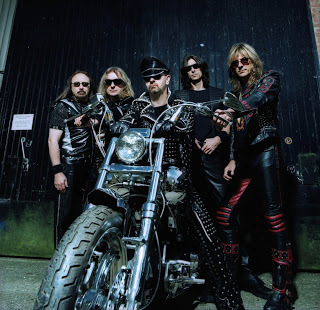 That's some bad-assery, right there.By the end of the book I was genuinely moved, even to a tear, by this beautiful man’s humility and introspection. He made mistakes, and owned them. He had regrets, and expressed them. He realized he was not living true to himself, and rectified it as best he could. He had a strained relationship with his father, and worked on it, reaching some measure of closure by the end of his Dad’s life. Rob has what I believe to be a high degree of agreeableness as a personality trait, which may sound lovely and positive, but can often lead to very negative consequences, and which I have found to be true in my own life. For example, not confronting simmering issues within the band, trying to smooth things over while you pursue a solo career, not resigning but not committing until the other members of Priest finally and understandably lost patience and found a new singer, Tim “Ripper” Owens, in 1996. Unlike some other pity-wallowing biographies of rock stars who never reached this level of introspection—see KISS drummer Peter Criss’ biography as Exhibit A—Rob owns up to his failures. That makes his triumphant return to Priest in 2004, and self-realization of who he was, an absolute joy to read, and lends this book a wonderful joyous turn at the end.
That's some bad-assery, right there.By the end of the book I was genuinely moved, even to a tear, by this beautiful man’s humility and introspection. He made mistakes, and owned them. He had regrets, and expressed them. He realized he was not living true to himself, and rectified it as best he could. He had a strained relationship with his father, and worked on it, reaching some measure of closure by the end of his Dad’s life. Rob has what I believe to be a high degree of agreeableness as a personality trait, which may sound lovely and positive, but can often lead to very negative consequences, and which I have found to be true in my own life. For example, not confronting simmering issues within the band, trying to smooth things over while you pursue a solo career, not resigning but not committing until the other members of Priest finally and understandably lost patience and found a new singer, Tim “Ripper” Owens, in 1996. Unlike some other pity-wallowing biographies of rock stars who never reached this level of introspection—see KISS drummer Peter Criss’ biography as Exhibit A—Rob owns up to his failures. That makes his triumphant return to Priest in 2004, and self-realization of who he was, an absolute joy to read, and lends this book a wonderful joyous turn at the end.Pardon the pun but Halford did in fact, confess. Huge respect to him for writing this book.
March 23, 2021
Swords & Sorceries: Tales of Heroic Fantasy
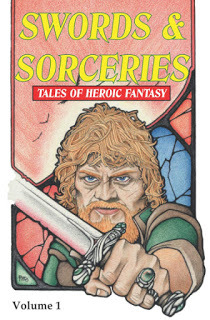 KEW? Is that you?Swords & Sorceries: Tales of Heroic Fantasy (2020, Parallel Universe Publications) was for most of its 219 pages an enjoyable read. I can recommend this one.
KEW? Is that you?Swords & Sorceries: Tales of Heroic Fantasy (2020, Parallel Universe Publications) was for most of its 219 pages an enjoyable read. I can recommend this one. I tend to react to a lot of new sword-and-sorcery with indifference, but I don’t think S&S fares any worse than other subgenres or most writing in general (the same can be said of my blog, where a handful of posts I’ve written seem to get regular traffic, but most collect dust). This book had as many hits as misses, which beats par for the course for many anthologies. Four standouts for me:
“The Horror from the Stars,” Steve Dilks. This was my first story from Dilks and I will definitely plan on reading more from him (his Gunthar collection has been on my to-purchase list). Reminded me of Charles Saunders’ Imaro with its bad-ass black main character on a path of vengeance. Well-written heroic fantasy with some great fight scenes and real weirdness layered in.
“Disruption of Destiny,” Gerri Leen. A quiet story, probably will not be what most readers who purchase this volume want or expect, but I really enjoyed it. It reminded me of a couple tales in the Gerald Page/Frank Reinhardt-edited Heroic Fantasy that question the warrior’s path and the damage wrought by a violent lifestyle. The protagonists’ suffering and care for her son were palpable, and I liked that the ending was a bit ambiguous. It stayed with me.
“Red,” Chadwick Ginther. I think this was the best story in the antho. The style reminded me very much of Joe Abercrombie—a bit crass, unflinching in its violence, seasoned with humor. Very, very well written at the sentence level, and the main character, a swordswoman named Red, was skillfully developed, and her motivation in this relatively straightforward story convincing. No infodumps. A scene in which she is swimming for her life underwater was particularly effective, and the final monster was grossly satisfying. This line: “Her sword was a strangely comforting weight on her breast. It filled the hollow in her gut that told her Needle was already dead” made me take notice.
“The Reconstructed God,” Adrian Cole. I was initially put off by the non-human/familiar demon protagonist, but damn if Cole—author of the revived Elak stories and the Dream Lords series—didn’t make the little imp work. A fine cross/doublecross tale populated with a bunch of roguish, self-interested thieving/scheming types, in the vein of a Jack Vance Cugel story. Good world-building here, but deft, not heavy-handed.
I loved the homages to classic sword-and-sorcery sprinkled throughout. I mentioned the Dilks story owing something to Saunders; Steve Lines’ “The Mirror of Torjan Sul” took its style and verbage from Clark Ashton Smith, while Geoff Hart’s “Chain of Command” was a straight up homage to Fafhrd and the Gray Mouser, albeit with a role/sex reversal (too Leiber on the nose for my tastes, but I appreciated the sentiment). Cole threw in a nice reference to an old classic with his use of “Thorgobrund the jeweler” (I see what he did there). And the introduction by editor David Riley pays tribute to one of the first volumes in the Pyramid anthologies that started it all, the classic L. Sprague de Camp-edited The Spell of Seven(1965).
All the other tales had points of merit. “The City of Silence” started excellent, with a shocking injury suffered by its protagonist, but ended flat (there were a few flat endings to otherwise fine stories, including “Trolls are Different” by Susan Murrie Macdonald). “The Mirror of Torjan Sul” had a fine, hot, demonic foe and was set in a well-drawn, atmospheric necropolis.
Of course I have to mention the nice artwork by Jim Pitts. I love seeing these veteran sword-and-sorcery artists get work thrown their way (I was pleased to be able to do the same for Tom Barber, who illustrated the cover of Flame and Crimson). I liked the cover illustration but also the skulls and motif art throughout.
I am looking forward to volume 2, and hope that vol. 1 sells well enough to encourage further volumes in the series—and helps spur the steady trickle of new sword-and-sorcery/heroic fantasy that we’re currently seeing.
March 7, 2021
A review of Ghost Rider: Travels on the Healing Road (Neil Peart)
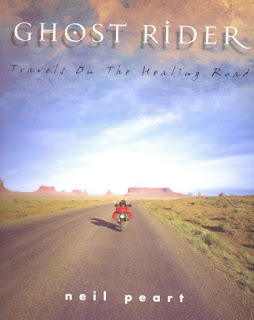 Ghost Rider: Travels on the Healing Road (2002) did not quite meet my expectations, both the book itself and in a larger sense who I believed/expected Neil Peart to be. In life Peart was such a private person that I knew very little about him, even after listening to Rush for decades, seeing them in concert some 6-8 times, and reading articles and interviews here and there. With Ghost Rider I spent 460 pages inside Peart’s head, and now feel like I know him a lot better.
Ghost Rider: Travels on the Healing Road (2002) did not quite meet my expectations, both the book itself and in a larger sense who I believed/expected Neil Peart to be. In life Peart was such a private person that I knew very little about him, even after listening to Rush for decades, seeing them in concert some 6-8 times, and reading articles and interviews here and there. With Ghost Rider I spent 460 pages inside Peart’s head, and now feel like I know him a lot better. The bulk of the book consists of reprinted letters to his friends written and sent while on the road from approximately 1998-2000, during some 2 years of solo motorcycling that took him across Canada, North America, and Mexico. Peart would get up early and ride his BMW motorcycle all day, stopping at hotels around 4 or 5 p.m. to eat, drink, and smoke, occasionally tour the local scenery, and write letters. He often rode through the rain or navigated unpaved roads, putting a beating on his bike which necessitated frequent repairs. Peart is revealed as a lover of nature, an aficionado of good food and wine/scotch whiskey, books including the likes of Jack London (he’s a fellow The Sea-Wolf and Martin Eden fan, I was pleased to discover), and someone who valued staying connected through letters and evening calls with a circle of friends. Peart also put a premium on staying private from the general public. He was rarely recognized during his travels and when he was, was intensely uncomfortable with it. Ghost Rider reveals that Peart had some low(ish) self esteem issues, and was amazingly humble given that he was/is a top 5, maybe top 3, rock drummer of all time. I’d also put him way up in the pantheon of all-time great rock lyricists.
Of course this trip was prompted after the crushing loss of his daughter and common-law wife within a year of each other, the first at age 18 or so in a single car accident, the latter from cancer but also depression and a broken heart. Heart-rending stuff. These experiences destroyed the former Peart and left him rootless, unmoored from his past, and severing him from what he thought to be his chief interests, including drumming, which he abandoned for more than 18 months. Certainly he lost all interest in touring and playing with Rush, which clearly he considered his work/professional life. This side of his life is mentioned surprisingly little in Ghost Rider. Peart is at a few points angry, even petty, in his criticism of “fat Americans,” and an inattentive waitress. Some of these passages come across as a bit mean-spirited, directed at people who didn’t seem to actually interact with him, and were just in the wrong place at the wrong time. But these incidents were most prevalent earlier in his ride/early in the book, when he was angry at the world. A few times Peart expresses (understandable) anger that loud, boorish people are alive, while his wife and daughter are dead. I can’t blame him—that’s a catastrophe that I cannot imagine enduring, and I’m sure it led to emotions spilling out of which he had no control. I give him a pass.
 Peart on the road.In short, Ghost Rideris recommended, but probably only to Rush fans. At more than 400 pages it gets a bit repetitive on the travelogues, and could have been trimmed down. I would have liked to have seen less emphasis on letters, especially letters recounting old stories with old friends that lack emotional impact and relevance to an outsider, and more self-reflection on his healing journey. Some of the passages about him going through his daughter’s effects (stuffed animals, books) were heart-breaking and will remain with me. Peart’s time wintering in Canada, fending off the depravations of a squirrel intent on his bird feeder, with a nerf gun, were good fun, and again revealing some surprising sides of a complex person I never knew. I was so glad to see him meet the love of his life at the end, and say goodbye to the “Ghost Rider” persona he adopted on the journey (he adopted a few others too, pseudonyms, which seemed to be an ongoing theme in his life, a coping mechanism for not being fully comfortable in his own skin, but this aspect was not as well explored as it could have been).
Peart on the road.In short, Ghost Rideris recommended, but probably only to Rush fans. At more than 400 pages it gets a bit repetitive on the travelogues, and could have been trimmed down. I would have liked to have seen less emphasis on letters, especially letters recounting old stories with old friends that lack emotional impact and relevance to an outsider, and more self-reflection on his healing journey. Some of the passages about him going through his daughter’s effects (stuffed animals, books) were heart-breaking and will remain with me. Peart’s time wintering in Canada, fending off the depravations of a squirrel intent on his bird feeder, with a nerf gun, were good fun, and again revealing some surprising sides of a complex person I never knew. I was so glad to see him meet the love of his life at the end, and say goodbye to the “Ghost Rider” persona he adopted on the journey (he adopted a few others too, pseudonyms, which seemed to be an ongoing theme in his life, a coping mechanism for not being fully comfortable in his own skin, but this aspect was not as well explored as it could have been). I find myself these days listening to more Rush than I have in a long time. It’s fueled by a love of great music of course, but I suspect it’s also nostalgia for my youth, and for my days seeing Rush in concert, which will no longer happen again after Peart passed away in early 2020 from a glioblastoma.
Farewell Neil Peart, you are gone but never forgotten. Thank you for Ghost Rider, and the music, and your life.
March 5, 2021
Should readers of pulp sword-and-sorcery be worried about McElligot's Pool?
What are we to do with books from a bygone era that contain stereotypes or racist or sexist attitudes deemed harmful today?
I was admittedly a bit dismayed to read the news that some of Dr. Seuss’ books have been removed from circulation. And a little abashed. As little as 10-12 years ago I read the likes of If I Ran the Zoo, McElligot’s Pool, and And to Think that I Saw It on Mulberry Street, to my now teenage daughters. These were not the annoying, cloying, sing-song rhyme-y likes of The Cat in the Hat or One Fish, Two Fish, Red Fish, Blue Fish, but narratives about children exploring the wider world, and returning enriched from their adventures. They loved them, and so did I.
Now these have been pulled from the shelves by Dr. Seuss Enterprises, never to be published again.
Certainly it’s their prerogative, and of course they have every right to do so. But I now ask myself, was I a bad father for having read my kids these books? Further, do I remain a person of questionable character because of the kind of books I still read and enjoy today?
I’d be lying if I said I was not at least somewhat worried about the future of old pulp literature and classic sword-and-sorcery.
I’m not a publishing libertarian. I don’t think anyone should be able to publish whatever they want. Certainly new books that lead a reader to the conclusion that the Jewish race must be exterminated, or that children can and should be exploited, have no business being published. The question of to publish or not publish is a spectrum, and at the extreme end certainly almost all would agree that some books should never see the light of day.
But what about a book that contains a stereotyped image among an otherwise fun, harmless story about a kid using his imagination to weave a story about the wonders that may lie beneath the waters of an ordinary pond in a hayfield? McElligot’s Pool offers a meaningful metaphor about the power of the imagination. Are the presence of “Eskimo Fish from Beyond Hudson Bay” sufficient cause for its cancellation? Because if so, then perhaps Ballantine/Del Rey should stop publishing The Coming of Conan the Cimmerian, which contains “The Frost Giant’s Daughter” and “The Vale of Lost Women,” as well as The Conquering Sword of Conan, which contains the likes of “Man-Eaters of Zamboula.” All of which have been criticized for containing offensive material.
Canceling Howard would of course be terrible. I’m not a fan of clichés but certainly the old saying “throwing the baby out with the bath water” applies. You toss out “Man-Eaters of Zamboula” and you lose amazing passages, like the iconic trial of strength between Conan and Baal-pteor:
Conan's low laugh was merciless as the ring of steel.
"You fool!" he all but whispered. "I think you never saw a man from the West before. Did you deem yourself strong, because you were able to twist the heads off civilized folk, poor weaklings with muscles like rotten string? Hell! Break the neck of a wild Cimmerian bull before you call yourself strong. I did that, before I was a full-grown man—like this!"
And with a savage wrench he twisted Baal-pteor's head around until the ghastly face leered over the left shoulder, and the vertebrae snapped like a rotten branch.
You may say of this post, "apples to oranges." And you may be right. Dr. Seuss wrote children’s books, and Howard’s stories are for adults. Adults can read with historical context, but children cannot, and therefore it’s not worth leaving the images in Dr. Seuss’ books. Fair enough. Besides, most of his catalog remains intact. Few are likely to miss these relatively obscure titles, and it’s just easier to get rid of them (and less costly to hire an artist to re-do the images, and reprint books that might not be selling well to begin with).
But put enough pressure on a publisher of adult fiction, and they too will be faced with such a choice.
You might argue, “well, it’s Del Rey’s right to stop publishing Howard, and someone else can publish the Conan stories.” But it’s not that simple. What if the current publisher holds the exclusive rights, and then opts to sit on them, rather than surrender them?
Or, in a more sinister fashion, what if another publisher picks them up—a publisher with a name, and a family. Does that mean that this publisher is therefore a racist, by association? And fit to be ruined in the public sphere?
Or, what if the current atmosphere of shaming and fear continues to escalate, leading to only a disreputable publisher willing to pick up the Howard stories? Couldn’t that further damage Howard’s reputation, by association?
It’s not an easy issue.
My current proposal is to put a warning label on the cover, and let the reader decide. “This book, written in 1933, contains caricatures and stereotypes that readers may find offensive. They are preserved for the sake of artistic integrity and historical accuracy. Proceed with caution.” Similar to what the record labels did in the 80s with the “Parental Advisory/Explicit Content” stickers.
Except we’d need something more concise, snappier, than what I’ve suggested. “Warning: Old Pulp” might do it.
I’m probably worrying over nothing. Sword-and-sorcery is a niche within a niche, not taught in schools, unknown to most readers, unknown even to many who read fantasy. But I can’t help but worry, just a bit, about the future of these old stories I still hold dear.
Postscript: I hesitated to write this post, as I recognize and acknowledge that your opinions may well be very different than mine. I acknowledge that some will find Howard or Burroughs’ words, or Seuss’ images, deeply offensive and harmful. I cringe at them as well. I don’t defend them, and I certainly don’t celebrate them. But I recognize them as of their time, and I believe that the larger art within which they are contained is very much worthy of preservation, and continued reading and enjoyment. And continued discussion. Let’s have the discussion whether they are works of art, and works worthy of preservation. I would also ask you to think about what is lost when you stop publishing old books because some part of them is offensive by our modern, enlightened standards. I think that decision exacts a higher toll than you might realize.
February 22, 2021
A Fitting, Final Honor for Charles Saunders, Author of Imaro
My latest post for DMR Books is up: A Fitting, Final Honor for Charles Saunders, Author of Imaro.
Check it out for my thoughts on the late, great Saunders, who fled the circles of this world in May 2020, but left a warrior behind.
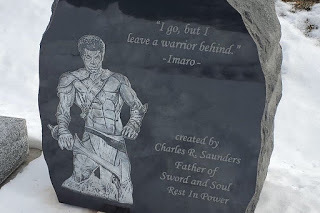 RIP Charles Saunders (July 1946-May 2020)
RIP Charles Saunders (July 1946-May 2020)


